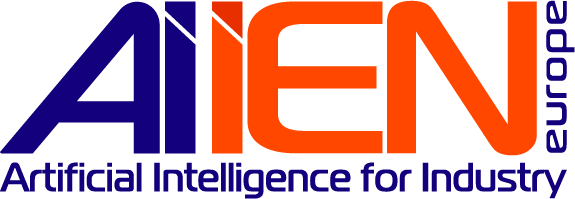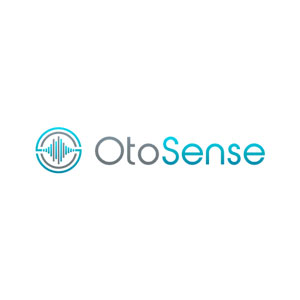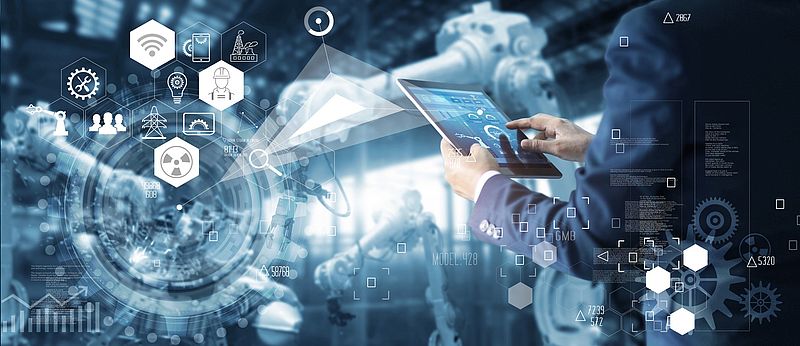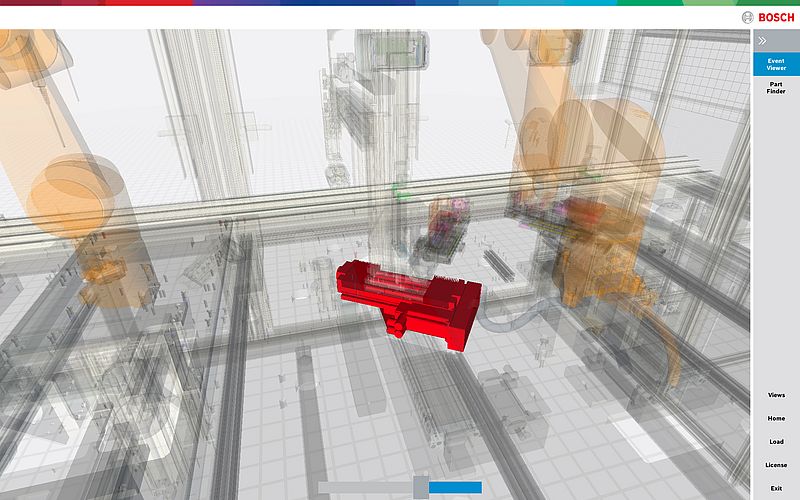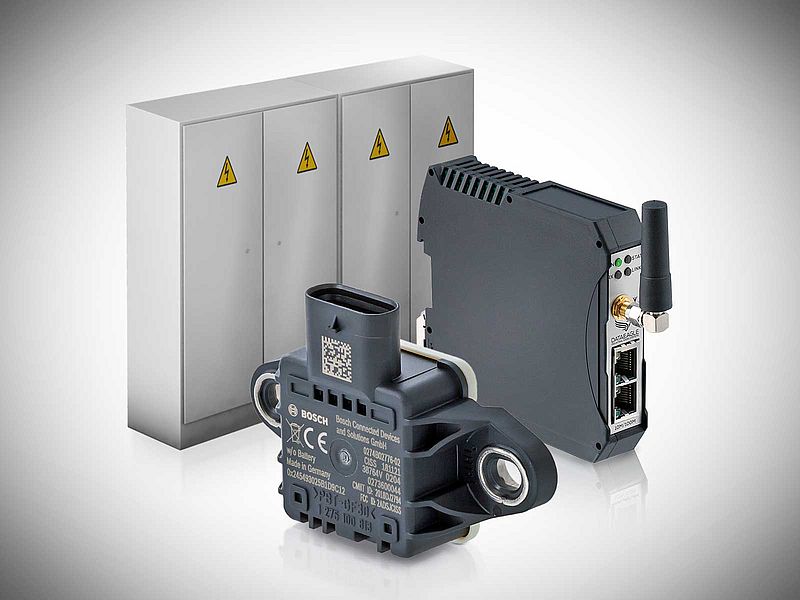Quick access
AI News2 AI Convention 2020 Replays: Omina Technologies3 AI Convention 2020 Replays: Tilkal4 AI Convention 2020 Replays: Oracle5 AI Convention 2020 Replays: Hogan Lovells6 AI Convention 2020 Replays: TIMi7 Whitepaper: ABI8 Exclusive Interview: Omina Technologies9 Article: ADI Otosense10 Interview: ESMERA Minotaur-R11 Application Story: MathWorks12 Article: Futurism Technologies13 Product Focus: Nexeed 'Control Plus'14 Product News15Companies in this issue
Hans Turck GmbH & Co. KG15 OMINA TECHNOLOGIES9 Oracle Corporation5ABI8 Analog Devices GmbH10 Futurism Technologies13 Hans Turck GmbH & Co. KG15 Hogan Lovells International LLP6 ICP Deutschland GmbH15 Inspekto GmbH2 OMINA TECHNOLOGIES9 Oracle Corporation5 Robert Bosch GmbH14 Schildknecht AG15 Technische Universität München11 The Mathworks12 Tilkal4 TiMi7
BMW Chooses Inspekto to Bring AI to the Factory Floor
The BMW plant in Steyr, Austria, is the BMW Group’s largest engine plant worldwide. At the facility, the top priorities are quality, efficiency and the transformation to Industry 4.0 through the implementation of digital technologies at shop floor level. To improve all three, plant managers embraced Autonomous Machine Vision, a new technology for quality inspection developed by German-Israeli company...
Artificial Intelligence, Vision & Identification
The BMW plant in Steyr, Austria, is the BMW Group’s largest engine plant worldwide. At the facility, the top priorities are quality, efficiency and the transformation to Industry 4.0 through the implementation of digital technologies at shop floor level. To improve all three, plant managers embraced Autonomous Machine Vision, a new technology for quality inspection developed by German-Israeli company Inspekto.
In line with BMW’s mission to improve production processes using digitalisation, the Steyr plant has several state-of-the-art machine vision solutions in place to inspect the quality of its engines.
However, even the most sophisticated traditional machine vision solutions suffer from pseudo-errors, where the solution indicates the presence of a defect in components that were actually made to specification. This creates an extra and unnecessary loop in production, since flagged items need be conveyed to a repair station, where an employee rechecks them manually.
“The most problematic issue is that with increasing pseudo-defect rates, employees at the repair station could let their guard down and assume that an actually defected item is good,” explained David Bricher, PhD candidate and expert in innovation and digitalisation at BMW. “BMW is not willing to compromise on quality and we want to prevent this scenario at all costs.”
Democratising quality
BMW is a strong believer in bringing AI-based technologies to the shop floor, so plant managers were on the lookout for an intuitive quality assurance technology. “The BMW Start-Up Garage helps us find new companies with ground-breaking ideas to improve our processes,” said Bricher. “The team researched several companies with innovative machine vision solutions, but only Inspekto offered exactly what we were looking for — a system that is out-of-the-box, and so intuitive that any employee can set it up.”
Inspekto then introduced BMW to the world’s first Autonomous Machine Vision system, the INSPEKTO S70.
“As opposed to traditional solutions, made up of several components that are selected and assembled by a systems integrator on a project base, the INSPEKTO S70 is a self-contained product,” explained Harel Boren, CEO and co-founder of Inspekto. “This eliminates the lengthy and complex integration phases that characterise traditional machine vision projects and puts the potential of industrial inspection right where it belongs: in the hands of the QA manager.”
Convinced by the capabilities of the INSPEKTO S70, BMW Group Plant Steyr purchased four systems and started a pilot phase to check their suitability for complex applications. Following its success, the systems are now already used in two different use cases — a connector with many small, hardly visible components and a fuel pipe. In both cases, the plant has noticed an improvement in quality and a noticeable reduction of false detection instances.
The Plug & Inspect® experience
“For me, one of the most interesting characteristics of the INSPEKTO S70 is its ease of installation,” confirmed Bricher. “At BMW, one of our main targets is to bring the potential of AI closer to the production field. We want to make AI easy to understand so that it can really serve our people. We have to get rid of the mystique that surrounds the technology — people have to be able to say: I work with AI.”
This philosophy perfectly mirrors Inspekto’s mission to democratise machine vision by putting a vision inspection product directly into the hands of the people on the shop floor. Thanks to the patented Plug & Inspect® technology that powers the INSPEKTO S70, the user simply switches on the controller and ensures that the field of view (FOV) covers the location to be inspected. The user then presents an average of 20 to 30 good items to the system, which will automatically learn their characteristics.
Much like a human being, the INSPEKTO S70 knows when it has enough information about a product and informs the user that inspection can start. Anything that is different from the characteristics of a good part, that the system has ‘memorised’, will be flagged as an anomaly. “Typically, machine vision solutions require a long training process, during which they are exposed to hundreds of defective parts. But in a manufacturing environment dedicated to the highest levels of quality, we don’t have that many defective parts readily available, so we would have to produce them explicitly for training purposes,” explains Bricher. “The INSPEKTO S70 only needs good parts, which is a huge advantage. We produce good parts all the time!”
The more the merrier
The BMW Group Plant Steyr needs to inspect many different kinds of engines and parts, often on the same production line, so traditional machine vision solutions are limiting because they are developed ad hoc to inspect only one item. The INSPEKTO S70, on the contrary, can inspect an array of different products on the same production line and easily switch from one to the other, providing maximum flexibility.
The benefits of Autonomous Machine Vision are already visible at BMW Steyr. “The most important thing for us it to ship perfect engines. In this sense, the INSPEKTO S70 has already proved to be a valuable tool,” added Bricher. “The other priority is efficiency. By eliminating pseudo-defects, the system allows us to avoid the extra loop of manual double-checks.
“This also means that we will reduce costs in the long run, because employees will not waste their time rechecking components, they can instead be assigned to more productive tasks. But the more important thing for me is that with the INSPEKTO S70 we have brought AI closer to our production employees.”
European Commission Invests in Next-generation IoT Healthcare Project to Fight Covid-19
The €8 million three-year project ''IntellIoT'' will use Artificial Intelligence (AI) and Internet of Things (IoT) technologies, to treat patients with cardiovascular diseases remotely
Artificial Intelligence, Covid-19, Industry 4.0
The European Commission has embarked on an €8 million project called ''IntellIoT'' to champion intelligent, autonomous, and human-centered healthcare solutions. The three-year project, comprising a consortium of 13 partners from 9 countries, will enable autonomous IoT-systems that show intelligence at the edge close to the user, where patients receive instantaneous healthcare advice without transferring a large amount of data to central premises. Not only will this help with immediate coronavirus issues, but it will also help with any future outbreaks. With the help of Artificial Intelligence (AI) and Internet of Things (IoT) technologies, patients with cardiovascular diseases will be treated remotely easier, faster and with higher quality.
The Covid-19 crisis has posed unprecedented demands on healthcare systems worldwide, highlighting like never before the need to develop new, human-centered and autonomous technologies that can dramatically optimize patient-management and treatment. In the fight against the coronavirus, digital technologies play an unprecedented role in the maintenance of daily life and economic and social activities, as well as in the recovery of industry and business. The use of biometric sensors and remote health assistance allows close monitoring without the need for face-to-face consultation or physical hospital visits. Activity trackers and health monitoring devices are instrumental for the early detection of the disease or possible infection, right up to the point where a virus infection starts to spread.
Rethinking healthcare
“There is however a need to rethink healthcare in light of this pandemic,” iterates Rolf Riemenschneider, Head of Sector for Internet of Things at the European Commission. With an investment of about €80 million under the focus area of Digitizing European Industry, the Commission has developed interoperability mechanisms for integrating healthcare devices into our daily lives. “Accelerated through Covid-19, IoT applications now need to look beyond connecting a variety of different wearable devices, by adding intelligence, autonomy and security to the IoT edge node, close to the users.”
“IntellIoT stands for Intelligent IoT”, explains Vivek Kulkarni, Senior Key Expert at the Corporate Technology department of Siemens AG and the Coordinator of the consortium. “Together with the partners, we aim to develop a reference architecture to enable IoT environments for (semi-)autonomous IoT applications endowed with intelligence that evolves with the human-in-the-loop, based on an efficient and reliable IoT/edge-(computation) and network-(communication) infrastructure”. This framework will be able to dynamically adapt to changes in the environment with built-in and assured security, privacy, and trust.
IntellIoT is one of six research and innovation actions (RIA) initiated by the European Commission in 2020, specifically with the goal of developing innovations and collaborations by concentrating on “Next–Generation Internet of Things” powered by 5G, designating a €47.9 million EU budget to these six activities in question.
Powering the future of healthcare
Championing the development of integrated, distributed, human-centered and trustworthy IoT environments, IntellIoT is made up of 13 partners, including the University General Hospital of Heraklion, which has been put to the test throughout the pandemic.
“The rapid spread of the novel coronavirus has challenged healthcare systems across the world”, explains the hospital’s Prof. Fragkiskos Parthenakis. “In the beginning of the pandemic we all faced a lack of information and data, be it patients, doctors and political decision makers. Over the last months, we have learned that data is very important for decision making in any sector but especially in healthcare. Intelligent IoT solutions that provide humanized, trusted and secure data will help facilitate the use of distributed AI for decision making and better service in healthcare in the future.”
Over the course of the next three years, IntellIoT will leverage technologies in 5G, cybersecurity, distributed computing, augmented reality and tactile internet that can empower healthcare professionals and establishments to work more efficiently and with greater insight, and that places patients’ needs and their wellbeing at the forefront.
The use case specifically supports the remote care of patients with cardiovascular diseases; a patient group who are particularly at risk. By allowing remote care, unnecessary hospitalizations can be prevented, pressure on hospitals is relieved, healthcare costs are reduced, and the quality of patient care is improved. New IoT applications will enable autonomous health monitoring and interventions by carefully preserving the privacy and security of patients’ data and providing trust assurance. Patients will be engaged via a rehabilitation program e.g. heart failure patients or patients recovering from cardiac arrests. They can use sensors and devices without being limited to their home or to the hospital for carrying out the rehabilitation. This way, patients can re-immerse into their normal environment safely and quicker than what is currently possible, or they can be treated remotely in order to reduce the risk of further infection. Clinicians act as human-in-the-loop, receive updates from the IoT-supported solution, and are notified when their intervention is required.
AI algorithms for healthcare and new tech architectures
In the special healthcare project, the University General Hospital of Heraklion will work with experts from health technology company Philips, with the aim of developing AI algorithms that support existing diagnostic healthcare devices and sensors, and to evaluate new tech architectures with end-users, such as patients and medical experts in realistic environments at the hospital. Through enabling new technologies, IntellIoT can help furnish the hospitals of the future with intelligent devices that autonomously conduct health monitoring and interventions, and analyse large swathes of data while relieving pressure on otherwise overloaded healthcare systems. Such developments are especially pertinent in the context of a pandemic, in which remote and sophisticated patient management is paramount.
“By applying AI in a way that improves decision-making for healthcare providers, IntellIoT has the potential to help capture and make sense of each patient’s data throughout their unique care pathway, ultimately supporting the quadruple aim: an improved experience for staff and patients, better health outcomes and a lower cost of care,” said Anca Bucur, Senior Researcher at Philips.
A multifaceted project spanning three key industries
Apart from healthcare, IntellIoT will foster the creation of IoT solutions applicable to agriculture and manufacturing, while fomenting an ecosystem united by a shared vision committed to privacy, security, trust, and in which the intelligence of humans and devices can seamlessly intertwine.
With collaboration and open-source sharing being two cornerstones of the European Commission regarding its projects, IntellIoT will hold two open calls geared towards enabling startups and SMEs to build applications, services and extensions on the project’s framework in three concrete use cases: 1) healthcare, 2) agriculture and 3) manufacturing. SMEs and startups will receive up to €150,000 to execute pilot projects alongside the 13 consortia partners, in order to apply the IntellIoT technology, improve their products and services, and create new jobs.
“The goal of this collaboration will ensure the applicability of the technology framework developed by IntellIoT in real-world scenarios, as well as to allow innovative solutions created on top of the IntellIoT framework and to build an ecosystem around the technology for exploitation beyond the project lifetime”, says Arne Bröring, Senior Key Expert Research Scientist at the Corporate Technology department of Siemens AG and Technical Project Manager of IntellIoT
AI Convention 2020 Replays: Omina Technologies
Discover or re-watch one of our webinars that aired during AI Convention 2020: "How to increase ROI with AI in manufacturing" by Rachel Alexander, CEO, Omina Technologies. Videos and presentations are available.
Artificial Intelligence
Omina Technologies. Why is it imperative to automate the artificial intelligence pipeline in manufacturing? Manufacturing companies are trying to maximise margins. They want to go beyond robot process automation and finally see big returns on investment, but in order to do this they must adopt lean AI, let the business drive AI and automate the AI pipeline. Omina Technologies will show you a surefire way to get production ready algorithms quickly into production that will maximise your margins. Omina Technologies has delivered scalable and trustworthy Artificial Intelligence solutions to both large and small companies across Europe and the USA since 2016. We believe in leveraging artificial intelligence in an ethical way.
About the speaker:
Rachel is CEO and founder of Omina Technologies, an AI company dedicated to ethical AI solutions, and recently won the award for ‘Artificial Intelligence Person of the Year’ in Belgium. Rachel is responsible for the technological vision and strategy of Omina Technologies. During her physics studies at Indiana University she became fascinated by the world of artificial intelligence and machine learning. Rachel has lived and worked in Belgium for the past twenty years devoting herself to helping companies navigate new technological advances and incorporating them seamlessly into their strategy. Before founding Omina Technologies Rachel worked as Global IT Director at Studio100 and in the management of CSC (Computer Sciences Corporation).
AI Convention 2020 Replays: Tilkal
Discover or re-watch one of our webinars that aired during AI Convention 2020: "From sampling to continuous flow analysis: challenges and opportunities of blockchain technology" by Matthieu Hug, CEO, Tilkal. Videos and presentations are available.
Industry 4.0, Artificial Intelligence
Tilkal. As we are speaking of Industry 4.0, an idea of "Traceability 4.0" is also emerging. It is the transition from a spot-checked and fragmented observation, to a continuous analysis of the data flow provided by each of the stakeholders, from upstream to downstream.
It is the transition from hardly accessible traceability information to real-time, continuous and shared traceability on each product or each batch. Although it is not sufficient by itself, blockchain technology is an essential brick of a modern traceability solution. It is adapted to the complexity of current supply chains and to their new challenges.
This presentation discusses some examples of initiatives around operational improvement, regulatory compliance, and customer transparency.
About the speaker:
Matthieu Hug is a serial entrepreneur, co-founder and CEO of Tilkal since its establishment in 2017. From 2007 to 2016 Matthieu co-founded and served as the CEO of RunMyProcess, a unique cloud platform that enables hundreds of entreprise customers in more than 45 countries to overcome the technology barriers to digital transformation. In 2013, following RunMyProcess acquisition by Fujitsu, Matthieu also became a group VP of Fujitsu in order to bring his vision and experience to bear on direction of the wider Fujitsu technology portfolio.
AI Convention 2020 Replays: Oracle
Discover or re-watch one of our webinars that aired during AI Convention 2020: "How AI and Digital are key of manufacturers survival" by Eric Prevost, Vice President, Oracle Corporation. Videos and presentations are available.
Industry 4.0, Artificial Intelligence
Oracle Corporation. Industry 4.0 trends require manufacturers rethink their digital strategy and platforms to transform their challenges into opportunities. In this turmoil period, manufacturers must use data as the new creativity, efficiency and revenue oil while the golden age of traditional delocalized mass manufacturing is over. New business models, and new supply chain, geopolitical, environmental, societal challenges are creating new opportunities. A new world of convergence between Modern Digital like Cloud, AI, IOT, Blockchain, mixed with Modern experience economy of services and manufacturing needs to be setup for getting value of new opportunities.
About the speaker:
Eric has 20 years of experience working in digital and business innovation, and transformation strategy roles. He has deep cross-industries knowledge in innovation and Digital/Business Strategy. His career experience includes senior and executive positions in management and IT strategy at IBM Global Services, Capgemini. Prior to this role, he successfully supported manufacturing companies to design and transform their business model to subscription-based model. Co-authored IBM Book “BPM: Modeling through Monitoring”; co-authored Industry 4.0 whitepaper French Syntec.
AI Convention 2020 Replays: Hogan Lovells
Discover or re-watch one of our webinars that aired during AI Convention 2020: "AI and competition: can companies hide behind artificial intelligence?" by Salomé Cisnal de Ugarte, Managing Partner, Hogan Lovells. Videos and presentations are available.
Artificial Intelligence
Hogan Lovells. AI, machine learning and data are first order policy priorities in the European Union. The new European Commission recognises the potential of AI and big data for enhancing welfare and for the digital economy. However, the potential for harm is also thought significant. Historically first order price discrimination was fiction; today AI has made targeted pricing possible.
About the speaker:
Salomé Cisnal de Ugarte is the managing partner of the Brussels office of global law firm, Hogan Lovells, and a partner in the firm's Antitrust and Competition Group. Praised by clients for her excellent legal skills and the quality of her service, Salomé is described as "brilliant" and providing "spot-on advice on the legal issues, as well as on the required strategy to get the best results." She has been recognized as one of the top 10 "Women Who Shape Brussels" by Politico and by numerous legal rankings. Clients come to Salomé for her innovative and hands-on solutions to global antitrust issues. She advises on all aspects of EU competition law but has particular expertise and experience in global mergers and strategic alliances, high-stakes investigations and complex vertical issues.
AI Convention 2020 Replays: TIMi
Discover or re-watch one of our webinars that aired during AI Convention 2020: "Allow everyone to extract knowledge and value from their data" by Frank Vanden Berghen, CEO, TIMi. Videos and presentations are available.
Artificial Intelligence
TIMi. Discover how TIMi is revolutionizing the daily work of data scientists. In half an hour and based on real data, we accomplish what any other technology would do in weeks. Using raw data from a large supermarket chain with more than 1 million consumers, we build a 360° customer view, predictive cross-sell models, and the associated dashboard. To do this, we use a simple laptop and mouse.
About the speaker:
Frank Vanden Berghen owns a PhD in Applied-Mathematics in the field of Machine learning and Artificial Intelligence. Since more than 20 years, Frank is creating predictive models, first as a researcher, after as a consultant. As a consultant, Frank used practically all tools available on the market and felt frustrated because of the limitations of these tools. The question was: How is it possible that the best tools available at that time to do advanced analytics where tools developed by hobbyist during their free time in their garage? So, in 2007, Frank decided to create the most advanced tool for predictive analytics on the planet. TIMi was born. Since now more than 10 years, Frank and his team are pushing the boundaries of what’s possible to do with a computer, to boldly go where not dataminer has gone before. Using his tool, Frank is a recurrent top winner at Kaggle and KDD cups.
ABI. The demand for cloud-based services has never been greater. While nearly half of the world’s population is in partial or full lockdown, people are continuing their daily activities online. This has increased Internet traffic, with many communication service providers reporting a 30% to 40% spike in average traffic, but it has also led to a shift from many offline activities and transactions to online platforms. Mobile food delivery platforms have seen significant surge in orders. Consumer brands and retailers that lack e-commerce strategies are now facing significant business losses as malls and shopping centers have closed their doors during the outbreak. Retail banking now needs to rely fully on mobile applications and online video communication software has become virtual classrooms for schools and universities.
"AI Must be Fair, Explainable, and Unbiased to Deliver Concrete Business Results"
Interview with Rachel Alexander, Founder and CEO at Omina Technologies
Artificial Intelligence
Is there a magic recipe to implement AI efficiently in today's ever-changing business world? According to Rachel Alexander, Founder and CEO at Omina Technologies, companies must be aware of their crucial role in driving artificial intelligence by having a concrete AI strategy that takes into account fairness, explainability, and bias in their data
AI IEN: Could you tell us a few words about you and Omina Technologies?
R. Alexander: I founded Omina Technologies in Belgium in 2016. The idea was to create an AI company for small and big companies, which incorporates the principles of Ethical Artificial Intelligence to make sure that AI is fair, explainable and that it investigates inherent bias in the data. Those were my three main concerns. At that time, the US elections were still ongoing, and people didn't understand the consequences of non-ethical artificial intelligence. At the same time, in 2016 and 2017, I traveled around Europe, giving talks about fair and trustworthy AI. Looking at the market, I noticed that Belgium was quite ready for AI, but something worried me. Mainly big companies were doing AI. That's how it all started.
AI IEN: How has the company evolved during these years?
R. Alexander: Today, there's so much going on around artificial intelligence, and we have grown fast during these four years. In 2016 we were a small start-up, and now we are 20 people just in Belgium and we have employees worldwide.
We started as a research and development company focused on creating ethical, explainable, and fair AI. We soon understood the importance of education in this field and we established a consultancy service called Omina AI Readiness Assessment, helping our clients to identify a competitive AI strategy. For today's businesses, it is fundamental to match their AI strategy with their company's strategy. For example, you will use AI in a particular way to improve operational efficiency. While if you seek to add value to your services and products or even bring an utterly new offering to the market, then different artificial intelligence approaches are required.
We noticed with our consultancy that many companies are getting frustrated now because they feel that AI has not been implemented strategically. This makes it harder to integrate AI into production. It is here that we step in. With our methodology and platform, we can efficiently implement AI and create acceptance within the company. Once you have aligned AI strategically, you want to ensure that it is fair, that you mitigated bias in the data, and that it is explainable. AI makes important decisions and predictions. If you can't explain why then your business won't accept it.
AI IEN: How beneficial is it to be based in Brussels, close to the EU institutions, for your job?
R. Alexander: It is certainly very important. We have been involved with the EU working groups from the beginning. Already at the end of 2016, I was committed to explaining to the Belgian government how important it is to have a trustworthy, ethical, and explainable AI. So we are very well positioned here in Brussels and in Antwerp to affect change in that matter.
Thanks to this dissemination work, companies, governments, and legislators are understanding the problem. The questions are currently getting more practical – "What do we do now?" or "How do we take the next steps to make sure to have a fast return on investments while being ethical?." Answering those questions is our expertise. We want to be pragmatic and talk to the business in business language.
AI IEN: How relevant is the role of small companies in shaping AI?
R. Alexander: The idea that only big companies can do AI is not true. Small and medium-sized companies can leverage its potential as well. We believe in giving AI as an answer to all different businesses. We have built this very powerful platform that enables companies to do artificial intelligence themselves. They don't have to get an army of specialized scientists to get started with AI anymore, but they can work directly with Omina's AI Platform, knowing that it is an inherently fair system that integrates trustworthy artificial intelligence into production.
That's how companies can get into production fast with AI. If they miss any of these steps – whether it is the strategy or mitigating inherent bias in the data, if they don't understand the use case and what they really want, it will be hard for them to drive artificial intelligence as they should do. In the end, all revolves around what companies are trying to achieve from a business perspective.
AI IEN: Do companies have a clearer idea of what they want now?
R. Alexander: The maturity level has improved quite a lot. In 2015 and 2016 companies really didn't understand AI, so I spent most of my time explaining what AI is and what our company can do. I believe there is a lot of understanding of the potential of AI now. At the same time, there is growing frustration within companies. They see this proof of concept springing up within their company without a return on investments.
It is difficult for businesses to understand why they are not getting results given that AI is supposed to be one of the most powerful technologies of the future. That is when they come to us. Thanks to our agile methodology, they can see results very quickly.
AI IEN: Could you tell me more about the platform that you have developed?
R. Alexander: This idea that the business should drive artificial intelligence is the cornerstone of our system. If you look at the different cases and you want to know, for instance, which customers are most likely to leave the company, you need to have clear goals. Do you want to know every single customer potentially at risk or just the most valuable ones? Or maybe you want to understand why your customers might be at risk – and that is the explainability part. There are different ways to go about that. Each business goal requires a different AI solution design, so a different approach. We built this platform to enable the business to put in its constraints and goals directly and get production-ready algorithms very quickly. It provides a sort of "recipe" for quick implementation.
Besides, business people know better than anyone else if there is any bias within the data. Typical cases occur when AI is used to look for the best CEO. Looking purely at historical data would discriminate against women, as there are not that many women CEO. It is essential to be careful when talking about legislation. For instance, there are anti-discriminatory laws around giving loans. The same applies to hiring/firing decisions and compliance with GDPR, to mention other examples. That is why considering the potential inherent bias in your data while including explainability is so crucial if you don't want to get into trouble or have liability issues. AI must be fair, explainable, and unbiased to deliver concrete business results.
AI IEN: How does your platform guarantee ethical AI?
R. Alexander: From a technical perspective, our platform asks businesses if they know about their data's inherent bias. But it could be that they are not aware of them. In this case, we have the ability to scan the data, pick up any bias, and feed that back to the business, highlighting the potential risks and conflict with existing legislation. By specifying various scenarios in the software, companies can pro-actively assess the impact of having different priorities or changing how they want to trade-off competing priorities on the generated AI solution. For example, a scenario where solutions are prioritized based on predictive performance, interpretability and group fairness, where the solution is optimized for group fairness potentially at the expense of lower predictive performance and is optimized for predictive performance potentially at the expense of lower interpretability, means using a different AI solution design than a scenario with the same priorities but where the user wants to optimize the solution for predictive performance potentially at the expense of group fairness. Afterwards it is easier to justify the implemented AI solution to various stakeholders by referring to the alternative prioritization scenarios that have been compared.
Another critical point is that our platform supports a proactive non-discrimination approach. It is not sufficient to react to unfair situations, but it is vital to detect and mitigate the bias by doing proactively specific steps in the AI pipeline to limit vices applying model bias mitigation actively. This methodology gives companies extra objectives, such as investing in predictive performance and optimizing simultaneously for, for instance, gender non-discriminations. A non-discrimination approach should not be an afterthought, but it should be adopted from the beginning and implemented as an AI design constraint.
Sara Ibrahim
Analog Devices Presented New AI-driven Platform at electronica 2020
Presented at electronica 2020, this AI-driven scalable platform collects data and gives feedback for better fault identification
Artificial Intelligence
ADI OtoSense aims to accelerate the digital journey of every companies of any size. OtoSense is an AI-driven, scalable platform enabling energy efficient Condition-based Monitoring (CbM). It solves two major concerns: Real-time edge interpretation and AI for sensing interpretation, which uses human expertise to help ADI software platform learn and progressively become an expert itself.
This platform detects and interprets in real-time any sound, vibration, pressure, current, or temperature for continuous, condition-based monitoring and on-demand diagnostics. It detects anomalies and learns from interaction with domain experts while creating a digital fingerprint to help identify faults in a machine. It can for example predict breakdowns which may cause costly downtime, damage, or catastrophic failure.
From experts’ specific knowledge to a general agnostic approach
OtoSense creates different ways of interaction between human and machines. It has the capability to make sense of data by digitizing the human expertise and bringing it towards the customer’s environment. Nicolas Layus, Director of ADI OtoSense Business Unit explained on how ADI noticed the need for such a tool: “We can see that numerous markets are moving to the digital transformation. Two factors are accelerating the demand for digital solutions: people who have been working for 20+ years and gathered all the knowledge and expertise on specific assets are retiring. As soon as they retire, unless the knowledge has been captured in a meaningful way such as leveraging a platform like ADI OtoSense where the user can digitize it, that knowledge would be lost. At the same time, technology enhancements like Industry 4.0 or 5G have enabled the capability to collect much more data, to know what is normal from what is abnormal.”
OtoSense is not engineered for specific markets or specific assets. It is an agnostic tool with a “bottom-up” approach. This means that the focus is on the demand from industry customers. Nicolas Layus continued: “The second reality is that when you notice an issue, you shall ask your provider to fix a specific problem, and another provider to fix another specific problem. Nowadays a lot of start-ups are offering niche solutions, focusing on specific market segments. Our platform has the potential to bring all this together. It is able to talk to any asset in any environment and being agnostic about the market.”
“The platform is alike to everyone who would use it. It is trainable because it can adapt to any environment”. Nicolas Layus, Director of ADI Otosense Business Unit
But does the AI come into play? Nicolas Layus answered: “We define AI by bringing the human into the loop. The goal to the AI journey is to enable an end-user to be able to tag data. The OtoSense platform figures out when something abnormal happens and provides a real-time feedback, gathers that information and creates a model to be pushed into the end device.” The platform utilizes Machine Learning to learn from the data. The data taken and pushed into the platform shall be unidimensional. Any data that is unidimensional or any combination of unidimensional data can be used.
One of the key functionalities of OtoSense is its Quality Control functionality, which has helped Danfoss’ desalinization – just to make an example – to bring fresh water to those in need, in an energy efficient way. Danfoss was able to reduce its energy output by 23% and potentially, in the future, by as much as 50%, lowering its carbon footprint. OtoSense can also be used in flow systems. The AI platform has developed an optimized system where it is able to send only a small percentage of sound and vibration samples to the cloud for continuous training of the model, while the rest is analysed locally.
Anis Zenadji
“Our Deep Learning AI Vision System is a Breakthrough in Itself”
Interview with Makis Pachos from the ESMERA Experiment Minotaur-R
Artificial Intelligence
Time is already running: Five ESMERA experiments are already in the second phase of their development processes and will finish the project at the end of year. These experiments have started developing robotics solutions in the summer of 2018 and have been accompanied, mentored and supported within ESMERA ever since. One of these almost finished experiments is Minotaur-R, an autonomous robotic system capable of detecting, picking and placing high radioactive Magnox springs. The ESMERA team talked to Makis Pachos from iKnowHow S.A. in Athens, who is part of the team developing Minotaur-R.
First of all, congratulations. Minotaur-R is one of the experiments already in the second phase, working on the final business plans and the Go-to-Market-Strategy. So, would you in general say that the development is going well?
Actually, yes. We have already achieved all the technical milestones. And we are in the process of assembling the final hardware now. There have been some significant challenges during the process, especially trying to keep the overall costs for the solution low. But now, the product is almost complete.
What is Minotaur-R about, what is the challenge you would like to solve?
It is a nuclear waste sorting challenge. Our robot identifies and picks highly radioactive Magnox springs, which are scattered among other radioactive nuclear debris of low or medium radioactivity.
Have you been able to test Minotaur-R in realistic environments?
To test it in real-life environments has not been in the scope of the challenge, of course. But in Phase II we have followed the challenge providers´ instructions to come as close to the real life environment as possible. And our new system is double the size and can cope with a much more challenging type of debris.
We had to rebuild our AI based vision system, which now works independent on lighting. And it can detect springs with down to only 20% of the spring not covered by the debris. It is a totally new system in Phase II.
That sounds good. ESMERA has already started in 2018. What made you apply for the project in the first place?
We are always looking for new challenges and ways to apply our technologies. We were already active in the area of sorting, picking and vision, so this was an opportunity to apply our expertise in the field and the market.
ESMERA is a Horizon 2020 project, what would you consider advantages and disadvantages to be part in such a project?
If you are a Start-Up, go for it! We had very good support from our mentors and we succeeded in our goals. Inside an EU project you get the means to fulfil your vision, get help and support from mentors and access to new fields, new organizations and people, which is always relevant and interesting.
You need to work within the framework of the program and there is a bit of bureaucracy involved, but you go through a learning curve and the competence centers help you, so that is just fine.
We are already almost done. The second phase ends in December. What are your expectations for Minotaur-R after the ESMERA project will have ended?
Inside the project we have developed streams of technologies. And we intend to apply them to the waste sorting sector in general, not only the nuclear waste sector. Our deep learning AI vision system is a breakthrough in itself. And we have a green application already in mind. So we have a lot of plans.
How did you come up with the name Minotaur-R in the first place?
Originally, the Minotaur is from the Greek mythology. But Minotaur-R is actually an acronym standing for “Magnox Springs Sorting with Autonomous Robot in Radioactive Environments”. It is a catching name and makes sense from the marketing perspective.
Due to Covid-19, the whole 2020 somehow did not go according to plan. Did it have an impact on your development and progress, as well?
Initially we had some setbacks, mostly when we needed to order hardware. So we split our development and did the software first, since we could do it from home. This is why we are now in the final development phase.
The Factory of the Future: 5 Trends for Industry 4.0
An application story by Philipp H. F. Wallner, Industry Manager – Industrial Automation & Machinery, MathWorks
Artificial Intelligence, Automation, Industry 4.0
The world has changed significantly since I wrote about trends for 2020, one year ago. But while our personal and professional lives have experienced a massive twist, the pandemic and its associated impacts have been more an accelerator for these trends rather than changing them. Digitalization has become more important than ever before, ways of making flexible production systems more autonomous and allowing engineers to validate the behavior of the equipment through simulation rather than onsite commissioning are indispensable today – and will remain so as part of the “current normal”. Here are five trends that will accompany us over the coming years.
1. AI projects becoming economically successful
While Artificial Intelligence (AI) has already found its way into our private lives, whether through smart phones, intelligent fitness trackers or smart assistants, the manufacturing industry has just started to seriously consider AI integration. The production line of the future, though, will rely heavily on AI for health monitoring and predictive maintenance services, visual inspection systems and optimization of manufacturing processes. AI techniques will lead the way towards the vision of a fully automated factory that flexibly manufactures goods in small batches – all the way to “sample size one” production. In 2021 and beyond, we will see more and more AI enabled applications that are not only technologically interesting but also economically relevant. And eventually, AI will allow for flexible and powerful machine software that would not have been possible with standard ways of programming.
2. Machine functionality being validated in the digital world
Growing complexity of machine software as well as the ongoing modularization of modern production equipment has led to more and more simulation upfront. The fact that international travel for commissioning or service have significantly reduced or in some cases halted these days reinforces this trend. Functional tests of the production equipment of the future will be performed using comprehensive models for simulation and virtual commissioning. The factory of the future will be built twice – first virtually, then physically. Digital representations of production machines continuously fed with live data from the field will be used for health monitoring throughout the entire lifetime of the equipment and will eventually make onsite missions be an exception.
3. Further fusion of shop floor and office floor
With modularized machines being interconnected through standardized protocols like OPC UA TSN and fixed cable connections being replaced with wireless protocols like 5G, we will also see a transformation on the office floor. Programs running on industrial controllers, edge devices and cloud systems will work even more tightly with apps and dashboards, and eventually lead to a fusion of the shop floor and the office floor. Increasingly powerful hardware systems will not only enable complex AI algorithms running on the production equipment but also induce a new level of human machine interaction through automated processing of text data and through natural language processing, widely established in the consumer industry with smart voice assistants.
4. Robots and autonomous systems automating production and material handling
Flexible production in the factory of the future will require robots and autonomous handling systems to adapt faster to changing requirements. While classic programming and teaching of robots is not suitable for preparing the system to handle the huge and fast-growing number of different goods, future handling equipment will automatically learn through reinforcement learning and other AI techniques. The prerequisites – massive calculation power and huge amounts of data – have been established over the past years.
5. More opportunities for engineers with “domain+” skills
While 2020 has shown us how important digitalization is for the manufacturing industry, the coming years will reveal who is ready for the factory of the future and who is not. Companies that will successfully embrace the challenges and opportunities of a more digital and virtual world will do so with teams of engineers with “domain+” skills i.e., those who are able to combine domain knowledge with (+) expertise in technology and tools from companies like MathWorks. Therefore, companies building and operating industrial equipment need to change their job postings and hire engineers with a completely different profile to be ready for a future in which Industry 4.0 is just the beginning.
Philipp H. F. Wallner, Industry Manager – Industrial Automation & Machinery, MathWorks
5 Reasons Manufacturing Businesses Should Accelerate Adoption of IIoT
An application story from Futurism Technologies
Industry 4.0
Futurism Technologies. What if a manufacturing business could leverage advanced analytics to forecast events pertaining to equipment breakdowns before they actually happen, use real-time and actionable insights to drive production and manage inventory, and help decision makers take right decisions at the right time? Industrial Internet of Things aka IIoT is driving such capabilities facilitating unmatched operational efficiencies and production performance like never before for the manufacturing sector.
Good news is that manufacturing businesses across the world are embracing the idea of IIoT and the growing need to embrace it. In addition, with the mounting challenges of digital disruption and the pressure to keep up with global competition, more number of manufacturers are turning to IIoT as the keystone of their digital transformation (DX) initiatives.
Did you know?
Manufacturing industry is expected to be the largest sector for Industrial IoT platforms as more and more companies realize the pros of connecting industrial equipment and machinery to streamline their operations and tame costs.
Since we are the cusp of the Fourth Industrial Revolution wave aka Industry 4.0, wherein businesses are realigning their digital investments and priorities, organizations ought to speed up with their digital transformation plans.
This is the reason digitization has become a top priority for manufacturing businesses worldwide to survive and thrive in a post-pandemic and competitive world. And what better way to kickstart your digital transformation journey than IIoT to creating a smart factory or connected factory.
Here are top five reasons manufacturing businesses need to embrace IIoT to stay ahead of the curve:
1. Mobility
IIoT mobile solutions help a manufacturing organization to improve its production efficiency and maintenance activities, as a part of its Industry 4.0 digital transition strategy. IIoT mobile solutions are aimed at mobile workforce within the production and maintenance sphere. With IIoT, you will always have access to work orders from anywhere in the plant or unit and be able to manage or track spare parts from the warehouse or from the shop floor. Mobility within manufacturing and asset management helps to create workforce flexibility and facilitates tactical abilities for addressing issues pertaining to efficiency, productivity, etc. Further, uninterrupted and on-demand access to system information leads to improved efficiency.
Key benefits include:
• Timely alerts to the engineering team/department directly via smartphones or wearables (smartwatches) when critical events occur in production line, supply chain, logistics, inventory, etc.
• Assisting field service experts/technicians on the run
• Ability to perform routine maintenance and material management activities on the go
• Quick and easy access to documentation
• Easy and quick access to SOPs, technical documentation, work instructions, etc. as and when needed.
2. Remote monitoring
IIoT empowers a manufacturing business to supervise, diagnose as well as solve issues for connected machineries and equipment remotely. Manufacturing businesses are utilizing IoT assets to connect systems and machines together, which is a paradigm shift enabling real-time asset monitoring capabilities. Connected assets offer the opportunity to monitor them for reliability, performance, safety and compliance in real-time and on the go. Asset monitoring is a boon in remote manufacturing businesses where sensors help to track production operations and send status/alerts or reports to the right personnel. It also provides a platform to control and manage assets for improved operation and production facilitating timely and proactive manufacturing decisions.
Connected machines and equipment can be easily diagnosed to check and identify potential issues. Remote monitoring includes tracking anything from usage and performance of a machinery/equipment to capturing alerts, tracking performance history, etc. Simply put, technicians can perform preliminary diagnostics from a remote location and recommend corrective measures. Efficient asset tracking in manufacturing leads to seamless status monitoring of key machineries and equipment as well as final products, to prevent quality issues and improve supply chain operations.
3. Aftersales
As IIoT enables a manufacturing business to diagnose and monitor connected equipment remotely, it is of great help when it comes to aftersales.
For an equipment manufacturer, aftersales means profit and revenue. This is where most of the manufacturing businesses fail, as they heavily rely on old school aftersales delivery models, which are not only inefficient, but are also costly.
In a traditional old-school aftersales delivery model, service technicians are required to hop between multiple site locations i.e. from the installation site to the manufacturing units and the other way around. On the other hand, connected equipment not only drives efficiency, but also eases the aftersales service model. Yes, the technicians can simply diagnose issues remotely and can then reach the installation location or site armed with the required tools to repair the same. This is how IIoT is speeding up the service delivery for a huge number of equipment manufacturers across the world.
4. Predictive Maintenance
According to the US Department of Energy, having a reliable predictive maintenance model in place can help a manufacturing business achieve 70% reduction in breakdowns, tenfold increase in ROI, 25%-30% reduction in maintenance costs and 35%-45% reduction in downtime.
For any manufacturing business, unplanned downtime can cost hundreds and thousands of dollars per hour. If the machinery breaks down unexpectedly, the manufacturing organization incurs a plethora of costs related to recovery and repair. In addition, there are costs pertaining to the disruption in production and supply chain. Having a predictive maintenance model in place can save the day here. According to a study by Accenture, IIoT could help cut equipment breakdowns by up to 70%.
IIoT can help technicians and experts perform proactive analysis for predictive intelligence. For example, if an equipment monitors a temperature range that is exceeding the required maximum limit, an alarm would go off. Now in a traditional setting, an operator would respond to such an alarm. Nevertheless, intelligent analytics derived through predictive maintenance model in an IIoT network would make it easy to foresee and prevent such events well ahead of time. Since unscheduled downtime consumes a good amount of a manufacturing organization’s production costs as well as time, having a predictive maintenance model becomes evident.
5. Connected Intelligence
By connecting equipment and machines, manufacturing businesses create an intelligent network of connected devices that coordinate and communicate with each other autonomously with little human intervention. With such use cases, businesses can collect as well as contextualize data coming from remote manufacturing equipment/assets and systems into intelligent and actionable applications. This helps to provide proactive insights into KPIs thus, helping in faster diagnosis. In addition, manufacturers can now choose to connect to different data centers and unify them all to facilitate real-time data visibility across diverse manufacturing systems and units.
IIoT enabled equipment thus facilitates connected intelligence, which transmits actionable and real-time insights to all the manufacturing stakeholders allowing them to manage units and assets efficiently on the run from anywhere.
Cyber Security
By 2025, the number of connected devices and equipment is expected to surpass 25 billion. From smart factories to smart cities and smart homes to smart workplaces, IoT is reinventing the way we live and perform daily business. This is why manufacturing businesses cannot afford to ignore IoT security. Yes, security ought to be a top priority when it comes to a connected or smart factory.
Mobile devices, connected equipment, sensors, devices, etc. increase the need for cybersecurity. A smart factory powered by IIoT demands for better and round the clock visibility, security and control over all its endpoints including the sensors, applications, mobile devices, IoT devices, wearables, etc.
Takeaway
IIoT has the ability to reimagine a manufacturing business as we see it today. As evolving industry dynamics and cutthroat global competition continue to push manufacturing businesses to reimagine their operations, data-driven and smart manufacturing models powered by the Industrial Internet of Things becomes quintessential.
Last but not the least, for a manufacturing organization to win at IIoT, it is advisable to kick off its digital transition plan with a phased roadmap with smaller projects and goals before building on a comprehensive IIoT network. This would help in optimum ROI and long-term success. Fact is that, more data will be created from connected equipment and systems and thus, the scope of actionable insights a manufacturing business can derive from IIoT is limitless.
Control-independent Software System
Bosch Connected Industry will present its new version of Nexeed Automation with Control plus V2
Automation, Industry 4.0
At SPS Connect 2020, Bosch Connected Industry will showcase its new versions of the Nexeed Automation software system "Control plus" as well as the "Virtual Assist" assistance system. This last enhancement is designed to make the implementation and handling of automation projects simple, even in special-purpose machine building.
During the development process, the user was at the centre of attention. Marc Bindel, head of the product area Automation and User Experience at Bosch Connected Industry explains: "We involve users in the development process at a very early stage and draw on Bosch's experience as a leading user and leading provider of Industry 4.0 technologies. The result is a solution that offers greater flexibility to machine builders, as well as machine operators and users.”
Cost-effective engineering for machine builders
The automation platform Nexeed Automation has demonstrated efficient modular engineering in special-purpose machine building. Thanks to the Control plus software system based on the IEC 61131 PLC standard and its extensive object library, software projects can be quickly generated and supplemented with process-specific sequences and functions. The user tests for the new version of Control plus focused on optimal system operation and the seamless integration of the assistance systems into the user interface.
Virtual Assist: intuitive operation and troubleshooting
One example is the 3D machine visualization: in contrast to conventional, text-based alarm systems, the Control plus HMI with Virtual Assist directly displays the source of the error. Thanks to color coding, machine operators can see immediately where an error occurred in the machine. In addition, the assistance system offers the option of recording action lists in a knowledge database, so that errors can be quickly rectified, and new or unfamiliar employees can immediately familiarize themselves with the situation. Not only limited to Control plus, the Virtual Assist assistance system can also be used via standard interfaces with control systems from other manufacturers.
Highly efficient for special-purpose machine building
"The 3D visualization is unique in its form for special-purpose machine building," continues Marc Bindel. "So far, it could only be implemented for large series production machines with a great deal of time and, above all, financial effort. Thanks to the new version of Control plus and the Virtual Assist assistance system, this is now possible up to batch size one." Those who integrate Control plus and the Virtual Assist assistance system into their machines benefit twofold: "We offer initial automation software that is extremely efficient, easy to configure and integrate. This benefits the machine builder, followed by the machine builder's customers and their machine operators," Nexeed Automation not only reduces considerable effort in the engineering phase. It also ensures that new systems can be handled quickly.
NVIDIA GPU Cloud Ready Modular Embedded PC
Designed for AI applications at the Edge, image processing and transport/traffic
Artificial Intelligence
ICP Deutschland provides the modular embedded system MX1-10FEP-D which has undergone functional tests by NVIDIA® and has thus been classified as "NVIDIA GPU Cloud Ready" (NGC). NGC is the core for process-optimized software such as deep learning, machine learning and high-performance computing.
Through its modular concept, the MX1-10FEP-D, can be flexibly adapted to meet individual requirements
The advanced mechanical design enables the installation of NVDIA® graphics cards such as NVIDIA® Tesla® P4 or NVIDIA® T4. The embedded PC supports the 8th and 9th generation XEON® and Core ITM processors from Intel® and offers sufficient CPU processing power. To be able to exploit its extremes, ICP offers the MX1-10FEP-D with matching industrial main memories and storage media as a ready-to-use system.
IP67 Ultra-robust HMI Devices
Enable cabinet-free operating and installation concepts
Automation, Industry 4.0
The TXF700 series from Turck provides an ultra-robust HMI series with complete all-round protection to IP67 for use at temperatures between -20 and +55°C. The HMI platform enables flexible and slim mounting, and it no longer requires installation in protective housings or control cabinets. The TFT displays are protected by a glass front and comprise a capacitive touch screen which supports multi-touch capability and gesture control. This allows the latest operating concepts from smartphones and tablets to be brought to the rugged environments of industrial automation. The TXF700 HMIs are available in display sizes from 5” to 21.5” and with a resolution of up to 1920 x 1080 pixels.
Can be used with Turck's TX VisuPro, without CODESYS, as an IIoT gateway or edge controller
The devices can be used wherever no Ex protection or hygiene requirements apply, e.g. in machine and system building, in the packaging industry, as well as in the intralogistics, mobile equipment and automobile sectors. Besides the conventional HMI protocols for connecting to controllers, such as Siemens, Beckhoff or Rockwell, TX VisuPro also supports MQTT or OPC-UA as server and client. The TXF700 HMIs can communicate simultaneously with up to eight protocols. Last, this gateway function enables data to be exchanged between different controllers or terminal devices.
Condition Monitoring System
Makes the data available via Bluetooth
Electronics & Electricity, Industry 4.0
To allow customers to implement their system quickly, Schildknecht follows the IoT-ready-to-use approach: a ready-to-use system for condition monitoring. The DATAEAGLE Condition Monitoring System fieldbus consists of a small multi-sensor for harsh industrial environments (CISS) and the wireless sensor gateway (DATAEAGLE 2730) with integrated fieldbus interface for controls from various manufacturers.
An easy solution for transmitting analog and digital input and output signals in the form of a distribution box
The small and robust multi-sensor acquires 8 measured variables (temperature, acceleration, humidity, noise, etc.) and makes these measured data available to the controller via Bluetooth every second. This DATAEAGLE CMS enables the use in vastly different applications both in new systems with e.g. Profinet or by retrofitting e.g. the Profibus-based stand-alone systems.
TIMGlobal Media BV
Rue de Stalle 140 - 3ième étage - 1180 Uccle - Belgium
o.erenberk@tim-europe.com - www.ien.eu
- Editorial Director:Orhan Erenberko.erenberk@tim-europe.com
- Editor:Kay Petermannk.Petermann@tim-europe.com
- Editorial Support / Energy Efficiency:Flavio Steinbachf.steinbach@tim-europe.com
- Associate Publisher:Marco Marangonim.marangoni@tim-europe.com
- Production & Order Administration:Francesca Lorinif.lorini@tim-europe.com
- Website & Newsletter:Marco Prinarim.prinari@tim-europe.com
- Marketing Manager:Marco Prinarim.prinari@tim-europe.com
- President:Orhan Erenberko.erenberk@tim-europe.com
Advertising Sales
Tel: +41 41 850 44 24
Tel: +32-(0)11-224397
Fax: +32-(0)11-224397
Tel: +33 1 842 00 300
Tel: +49-(0)9771-1779007
Tel: +39-02-7030 0088
Turkey
Tel: +90 (0) 212 366 02 76
Tel: +44 (0)121 705 21 20
John Murphy
Tel: +1 616 682 4790
Fax: +1 616 682 4791
Incom Co. Ltd
Tel: +81-(0)3-3260-7871
Fax: +81-(0)3-3260-7833
Tel: +39(0)2-7030631
- WebMag IEN Europe July 2024 IEN Europe presents Industry News, Products and Solutions for industrial decision makers in the pan-European B2B market.
- IEN Europe May 2024 IEN Europe presents Industry News, Products and Solutions for industrial decision makers in the pan-European B2B market.
- WebMag HANNOVER MESSE 2024 Special issue for Hannover Messe 2024, April 21 - 26
- WebMag January/February 2024 IEN Europe presents Industry News, Products and solutions for industrial decision makers in the pan-European B2B market.
- WebMag December 2023 Highlights Products and Solutions sps and from 2023
- IEN Europe November Webmag Special SPS As the industrial world gears up for the 2023 SPS Show in Nuremberg, attendees and exhibitors alike are eagerly awaiting the opportunity to delve into the latest trends and innovations that promise to reshape the future of industrial automation and techno
- IEN Europe April WebMag Throw an eye to this web magazine dedicated to the coming Hannover Messe 2023! We wish to see you there as well. Have a nice and interesting reading
- IEN Europe Jan/Feb 2023 Webmag Dear readers, Happy New Year to you! IEN Europe is coming back this new year with a special focus on robotics and digital automation.
- #6 AI IEN - December 2020 Discover our latest edition of our digital magazine: AI IEN!
- IEN Europe December Last issue of 2020, IEN Europe December highlights the key trends in the IoT & e-mobility, Automotive, and Identification & Vision Systems fields.
- IEN Europe November - SPS Webmag Discover in this digital issue the best technology showcased at the upcoming SPS virtual exhibition!
- #5 AI IEN - October 2020 We are delighted to release the fifth issue of AI IEN! With a specific focus on Artificial Intelligence (AI) applied to the industrial field, AI IEN aims to become a point of reference for all AI professionals.
- Covid-19 Special e-magazine Don't miss our new issue on Covid-19 to discover the most innovative Industrial answers to the pandemic.
- #4 AI IEN - June 2020 Don’t miss the fourth issue of AI IEN! With a specific focus on Artificial Intelligence (AI) applied to the industrial field, AI IEN aims to become a point of reference for all AI professionals.
- #3 AI IEN - April 2020 Don’t miss the third issue of AI IEN! With a specific focus on Artificial Intelligence (AI) applied to the industrial field, AI IEN aims to become a point of reference for all AI professionals.
- #2 AI IEN - February 2020 Don’t miss this new issue of AI IEN! With a specific focus on Artificial Intelligence (AI) applied to the industrial field, AI IEN aims to become a point of reference for all AI professionals.
- SPS Webmag November Discover in this digital issue the best technology showcased at the upcoming SPS - Smart Production Solutions 2019!
- #1 AI IEN - September 2019 We are delighted to announce the launch of our new digital magazine AI IEN. With a specific focus on Artificial Intelligence (AI) applied to the industrial field, AI IEN aims to become a point of reference for all AI professionals.
